There are eight crustaceans on Michigan’s list of invasive species that you should know about.
One of them is particularly interesting because it wasn’t prohibited in Michigan until 2020. The marbled crayfish hasn’t been detected in Michigan yet, but originated in the pet trade industry. They aren’t native anywhere and they can reproduce by cloning themselves.
Recommended Videos
Below are the details of eight invasive crustaceans that are already established in Michigan or the state just wants people to keep an eye out for because of the threats they pose.
- If you believe you have found one of these invasive crustaceans, you can report it through the Midwest Invasive Species Information Network. Just click here and search for the insect.
Chinese Mitten Crab
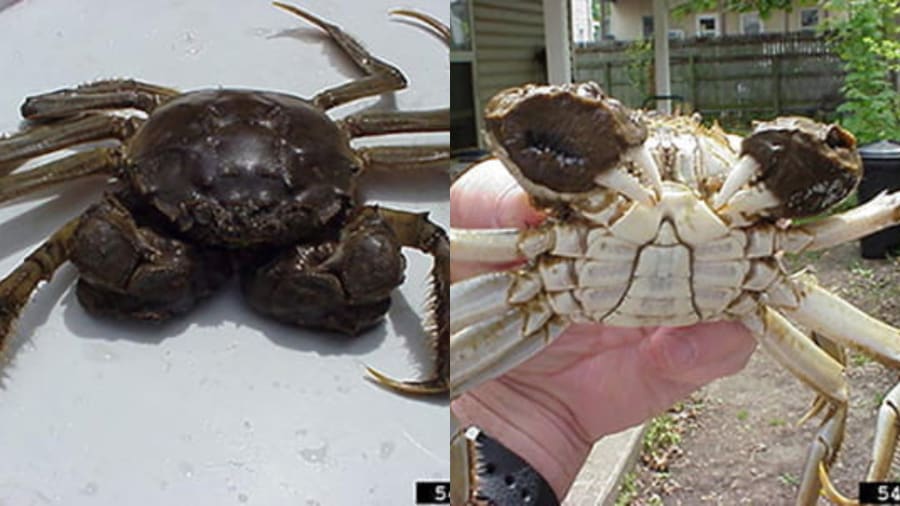
The Chinese Mitten Crab has not been detected in Michigan.
This crab is born in a marine environment, migrates to freshwater to live, and migrates back to a marine system to breed. In freshwater, they can be found in rivers, streams, estuaries, or bays that are abundant in aquatic vegetation.
They consume detritus, aquatic plants, algae, benthic invertebrates, and salmon/trout/sturgeon eggs. They are native to the Pacific coast of China and Korea.
Michigan officials are concerned about this species because its appetite can completely alter a food web and may allow them to out-compete native crabs, crayfish, and mussels for resources. They also burrow, which decreases stream bank stability and increases erosion.
They can consume fishing bait, damage or consume catch, damage fishing nets and clog pumps, screens and water intake structures. They are also an intermediate host of the Oriental lung fluke, which has not been found in any mitten crabs collected in the United States.
Tips for identifying the Chinese Mitten Crab:
- Brownish-orange to greenish-brown
- Claws are covered in hairs
- Convex and uneven shell reaches the size of an adult palm
- Notch between eyes, 4 spines on each side of the carapace
Here’s where they’ve been found in the United States: Chinese mitten crab have been reported in Chesapeake Bay, San Francisco Bay, Delaware Bay, Hudson River, Columbia River, and Mississippi River, but the only established population is currently in San Francisco Bay, California.
They could be introduced to Michigan through ballast water or intentional release.
Fishhook Waterflea

The Fishhook waterflea has been detected in Michigan.
Tips for identifying the Fishhook waterflea:
- Translucent body with black eyes.
- Body length: 1-3 mm; 6-13 mm including tail.
- Tail contains 3 pairs of barbs and an s-shaped hook near the end.
- Generally in clusters of at least 10 individuals.
- Clusters appear as wet cotton on items like cables, ropes, and fishing lines.
Fishhook waterfleas eat other zooplankton species. They live in freshwater and brackish lakes.
They have been reported in Lakes Ontario, Michigan, Erie, Huron and Superior; Muskegon Lake and the Finger Lakes of New York.
They pose a concern locally because their dietary preference put them in direct competition with native planktivores. Their long tail spine and barbs make it less appealing to planktivorous fish, so population regulation from predators is unlikely. They could have a serious effect on the planktivore food supply in the Great Lakes region.
Killer Shrimp
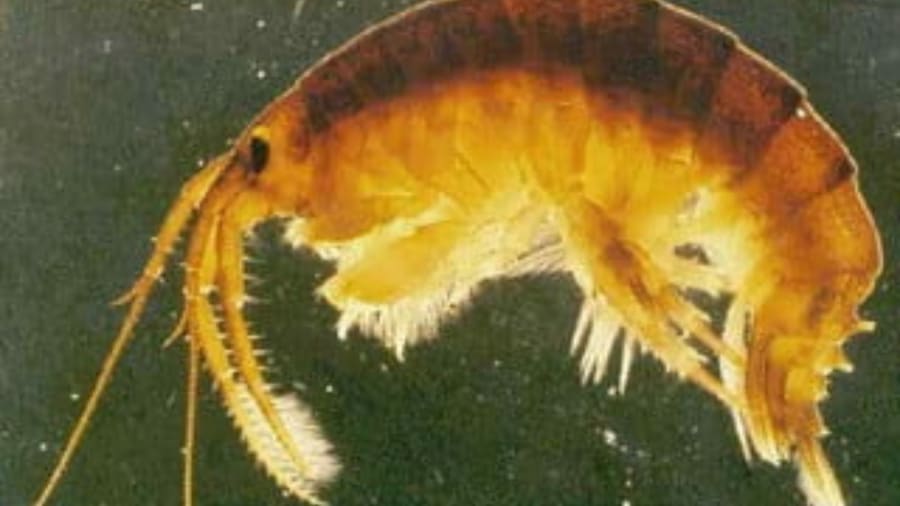
The killer shrimp has not been detected in Michigan.
Tips for identifying the killer shrimp:
- Body coloration ranges from transparent and striped to a uniform dark color.
- Curled body, laterally compressed.
- Sexual maturity reached at 6 mm in length, males grow larger than females.
- First 4 pairs of legs extend down and forward, next 3 pairs extend down and backward.
- 2 pairs of antennae.
Killer shrimp live in fresh or brackish water in lakes, rivers and canals. They can adapt to a wide variety of substrates with a wide range of oxygen, temperatures and salinity levels.
They consume mostly macroinvertebrates, exhibits cannibalistic habits and will occasionally eat conspecific young and weak adults. Interestingly, the killer shrimp has also been known to kill or injure potential prey without consuming it.
They are native to the Ponto-Caspian basin of Eastern Europe. They have the potential to spread rapidly through the Great Lakes if introduced through ballast or no-ballast-on-board water exchange.
Marbled Crayfish

Marbled crayfish has not been detected in Michigan and they are prohibited.
Tips for identifying marbled crayfish:
- A medium-sized crayfish, ranging from 4 to 5 inches in length.
- A marbled color pattern most visible on its carapace or back.
- Coloring is generally olive to dark brown but can range from tan to reddish to blue.
- Claws are slender or narrow.
Marbled crayfish have been found in streams, rivers, ditches, ponds, wetlands and retention basins. They can survive in drought conditions by burrowing into the soil. They have been spotted migrating across land.
Marbled crayfish originated in the pet trade and do not exist anywhere as a wild native population. They have been established in the wild in Germany, Austria, Italy, the Netherlands, the UK, Japan and Madagascar.
They are a local concern because it is the only known decapod crustacean that reproduces through the ability to self-clone. All individuals are female and have the ability to lay up to 700 unfertilized eggs that develop into genetically identical offspring. They can quickly take over lakes, ponds, and streams.
THey feed on algae, plants, snails and amphibians and can out-compete native species including fish. Burrowing can destabilize banks and shorelines.
They are available in the aquarium trade and create a high risk of introduction and spread through the release of unwanted pets. They could be purchased in Michigan prior to 2020.
Red Swamp Crayfish
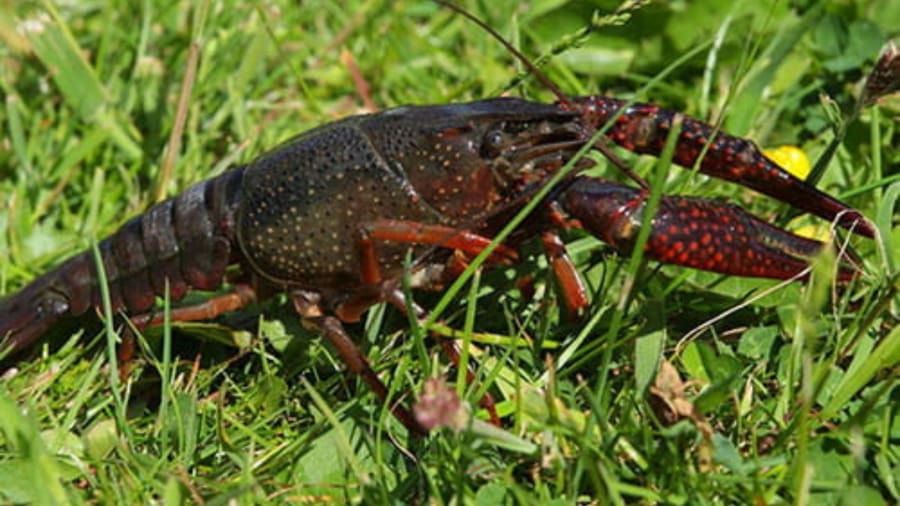
The red swamp crayfish has been detected in Michigan.
Tips for identifying the red swamp crayfish:
- Dark red color with bright red raised spots, look like small lobsters.
- Elongated claws and bony exoskeleton.
- Elongated head with a triangular rostrum.
- 2.2 inches - 4.7 inches in length.
These crayfish live in a variety of permanent freshwater habitats. They burrow deep into the substrate and create large mounds of sand and soil called chimneys with a large hole in the center.
They feed heavily on snails, fish, amphibians and plants. They have established populations in California, Delaware, Illinois, Maryland, Michigan, Ohio, Oregon, South Carolina, Utah, Virginia, Washington, and Wisconsin. Introduced but not established in Alaska, Hawaii, Idaho, Indiana, Nevada and New York.
They compete with native crayfish species for food and habitat. Their habits reduce the amount of habitat available for amphibians, invertebrates, and juvenile fish Their burrowing can lead to summer cyanobacteria blooms and eutrophic conditions.
THey were potentially introduced through the aquarium trade, classroom release, live bait dumping or through fish stocking events.
Rusty Crayfish
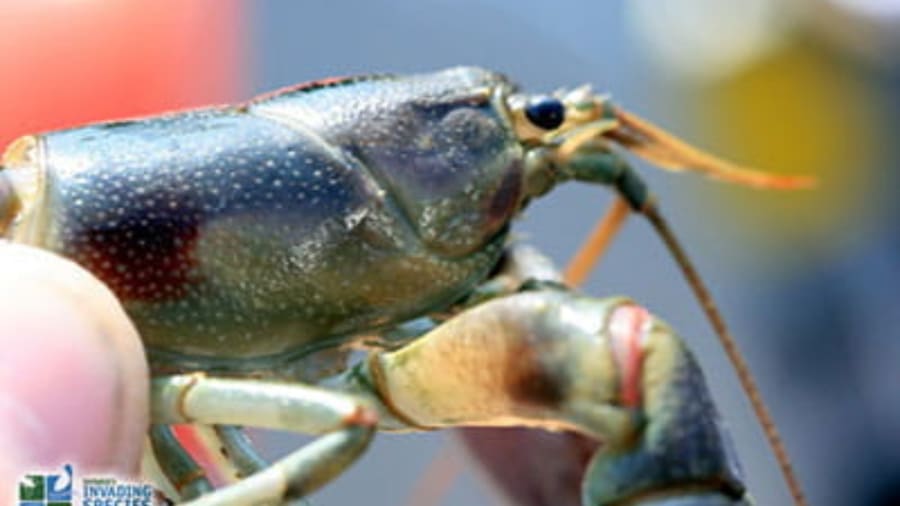
The rusty crayfish has been established in Michigan waters.
Tips for identifying the rusty crayfish:
- Lobster-like, brown body, up to 6 inches with claws.
- Oversized claws have an oval opening when closed and black bands at tips.
- Mature crayfish have a dark, rusty spot on each side of the carapace.
These crayfish live in lakes, streams and wetlands with cover of rocks, logs or trees. They do not burrow.
They eat two to three times more than native crayfish. They eat anything they can find including plants, snails, clams, insects, other crayfish, fish eggs and small fish.
They are native to Ohio, parts of Kentucky and Indiana. They’re found in Great Lakes states, New England south to North Carolina and Tennessee, western states including Colorado, Wyoming and Oregon. Also present in Ontario, Canada.
They are a local concern because they destroy aquatic plant beds. Their diet can impact native populations and ecosystems. They are collected and used as bait and have been transferred to other bodies of water that way.
Spiny Waterflea

The spiny waterflea is established in Michigan.
Tips for identifying the spiny waterflea:
- Long, straight tail spine that is twice the length of its body.
- 1-2 pairs of barbs on the tail spine.
- Total length: ¼ - ½ inch.
The spiny waterflea eats smaller zooplankton, like small copepods and other rotifers. They can be found among the zooplankton in the upper water column of temperate lakes. They can tolerate brackish water and prefer cooler water temperatures.
They pose a local concern because they cause major changes in the zooplankton community structure, reproduce rapidly, and compete directly with small fish for food. They also foul fishing gear when their tail spines get hooked on fishing lines.
Yabby
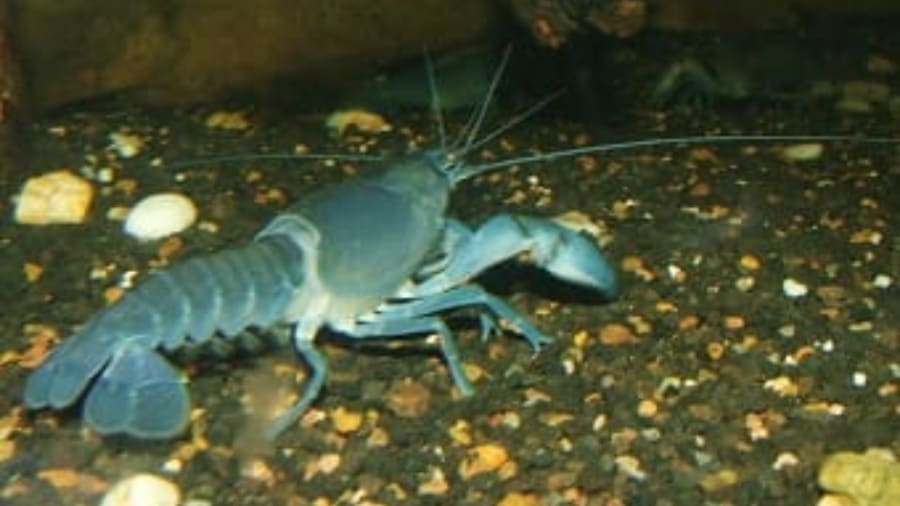
The yabby has not been detected in Michigan.
Tips for identifying yabby:
- Smooth carapace.
- Colors vary from olive-green to brown, but are sometimes red, yellow, or black.
- Crayfish have two enlarged front claws, four pairs of walking legs, followed by four pairs of swimmerets (small swimming legs).
The yabby prefers muddy or silted substrates in water with moderate levels of turbidity. They dig burrows, some of which can reach depths of up to 2 meters. Their burrows can compromise the integrity of dam walls and cause problems for farmers.
They eat rotting vegetation, but will likely eat anything it comes across including other yabby crayfish on occasion.
They are native to Australia. They are a local concern because of its rapid growth rate, high spawing frequency, extended breeding period and how quickly it reaches maturity.
They could be introduced to Michigan through aquaculture and aquarium trade.
Want to learn more about these invasive crustaceans? Click here.



